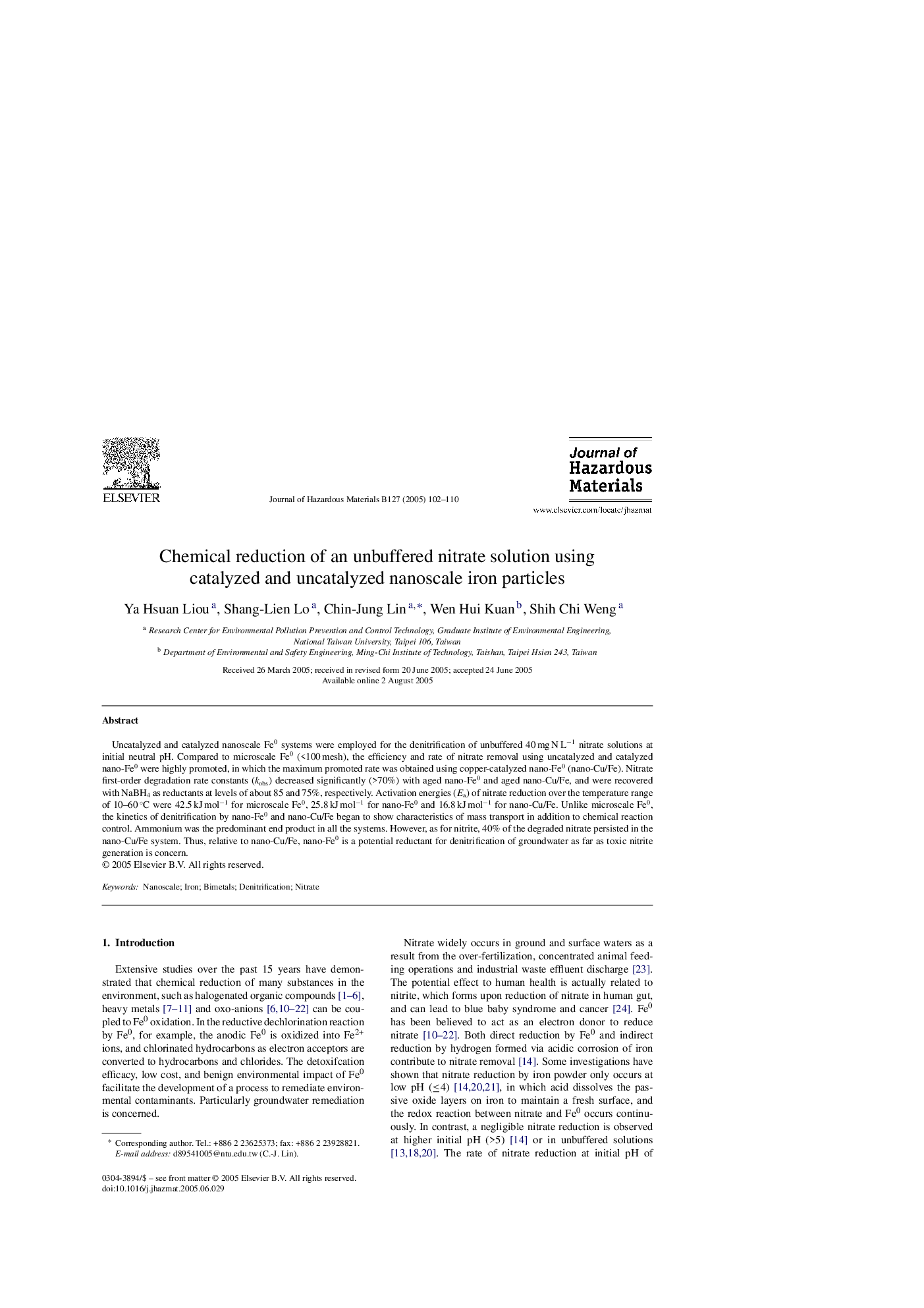| Article ID | Journal | Published Year | Pages | File Type |
|---|---|---|---|---|
| 9674064 | Journal of Hazardous Materials | 2005 | 9 Pages |
Abstract
Uncatalyzed and catalyzed nanoscale Fe0 systems were employed for the denitrification of unbuffered 40 mg N Lâ1 nitrate solutions at initial neutral pH. Compared to microscale Fe0 (<100 mesh), the efficiency and rate of nitrate removal using uncatalyzed and catalyzed nano-Fe0 were highly promoted, in which the maximum promoted rate was obtained using copper-catalyzed nano-Fe0 (nano-Cu/Fe). Nitrate first-order degradation rate constants (kobs) decreased significantly (>70%) with aged nano-Fe0 and aged nano-Cu/Fe, and were recovered with NaBH4 as reductants at levels of about 85 and 75%, respectively. Activation energies (Ea) of nitrate reduction over the temperature range of 10-60 °C were 42.5 kJ molâ1 for microscale Fe0, 25.8 kJ molâ1 for nano-Fe0 and 16.8 kJ molâ1 for nano-Cu/Fe. Unlike microscale Fe0, the kinetics of denitrification by nano-Fe0 and nano-Cu/Fe began to show characteristics of mass transport in addition to chemical reaction control. Ammonium was the predominant end product in all the systems. However, as for nitrite, 40% of the degraded nitrate persisted in the nano-Cu/Fe system. Thus, relative to nano-Cu/Fe, nano-Fe0 is a potential reductant for denitrification of groundwater as far as toxic nitrite generation is concern.
Related Topics
Physical Sciences and Engineering
Chemical Engineering
Chemical Health and Safety
Authors
Ya Hsuan Liou, Shang-Lien Lo, Chin-Jung Lin, Wen Hui Kuan, Shih Chi Weng,
